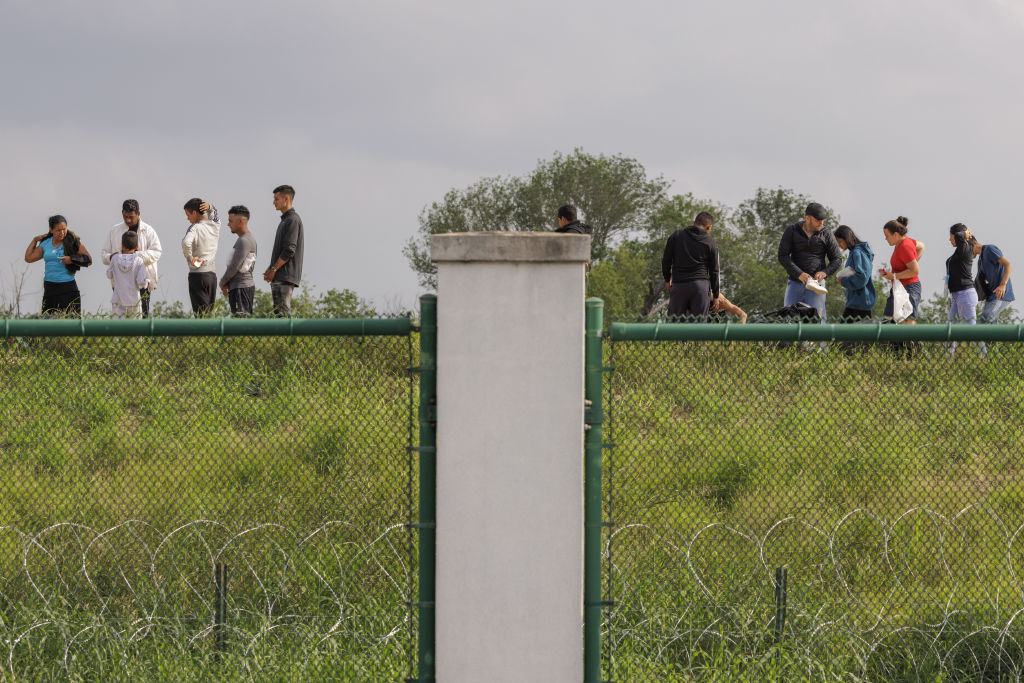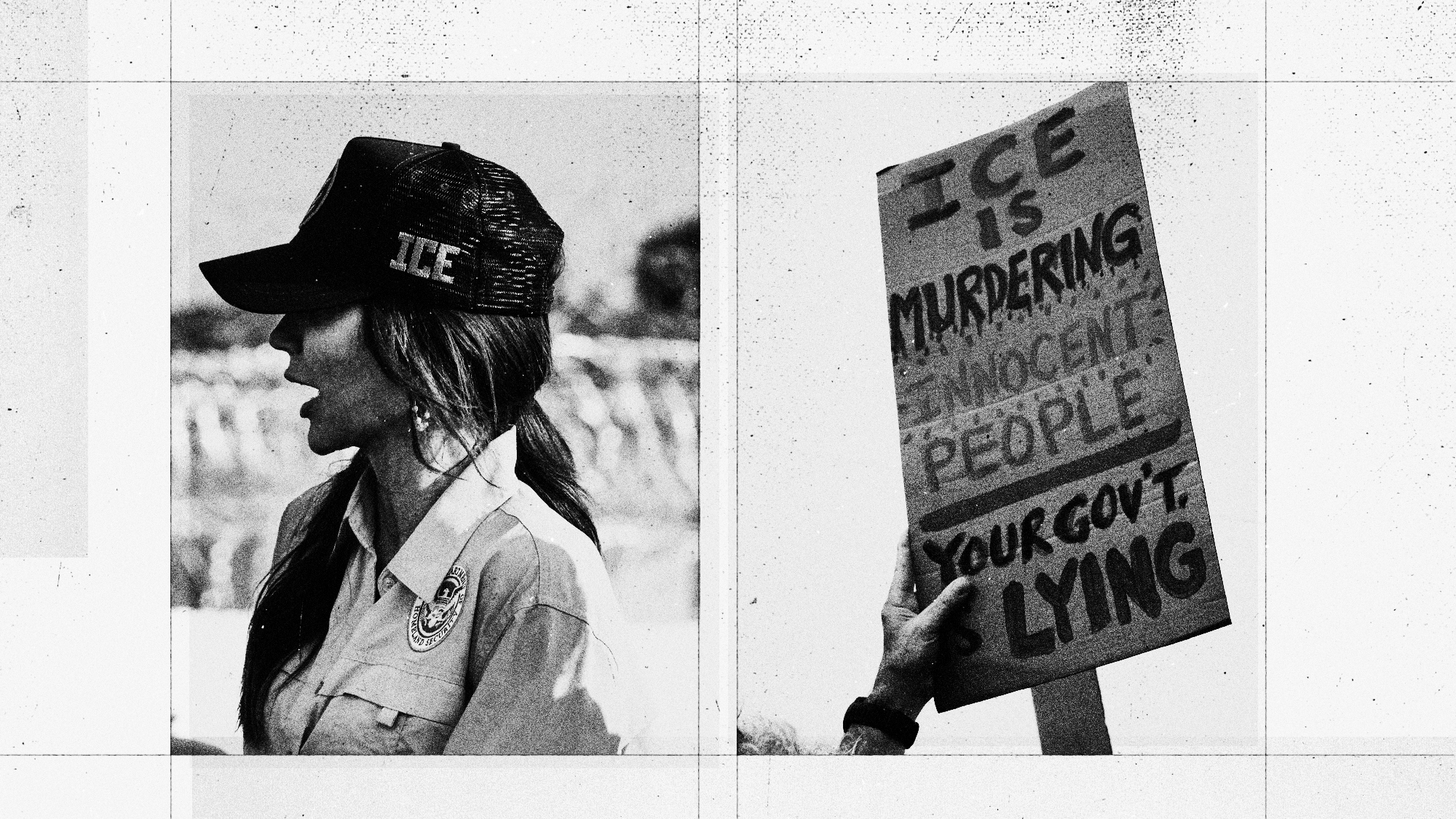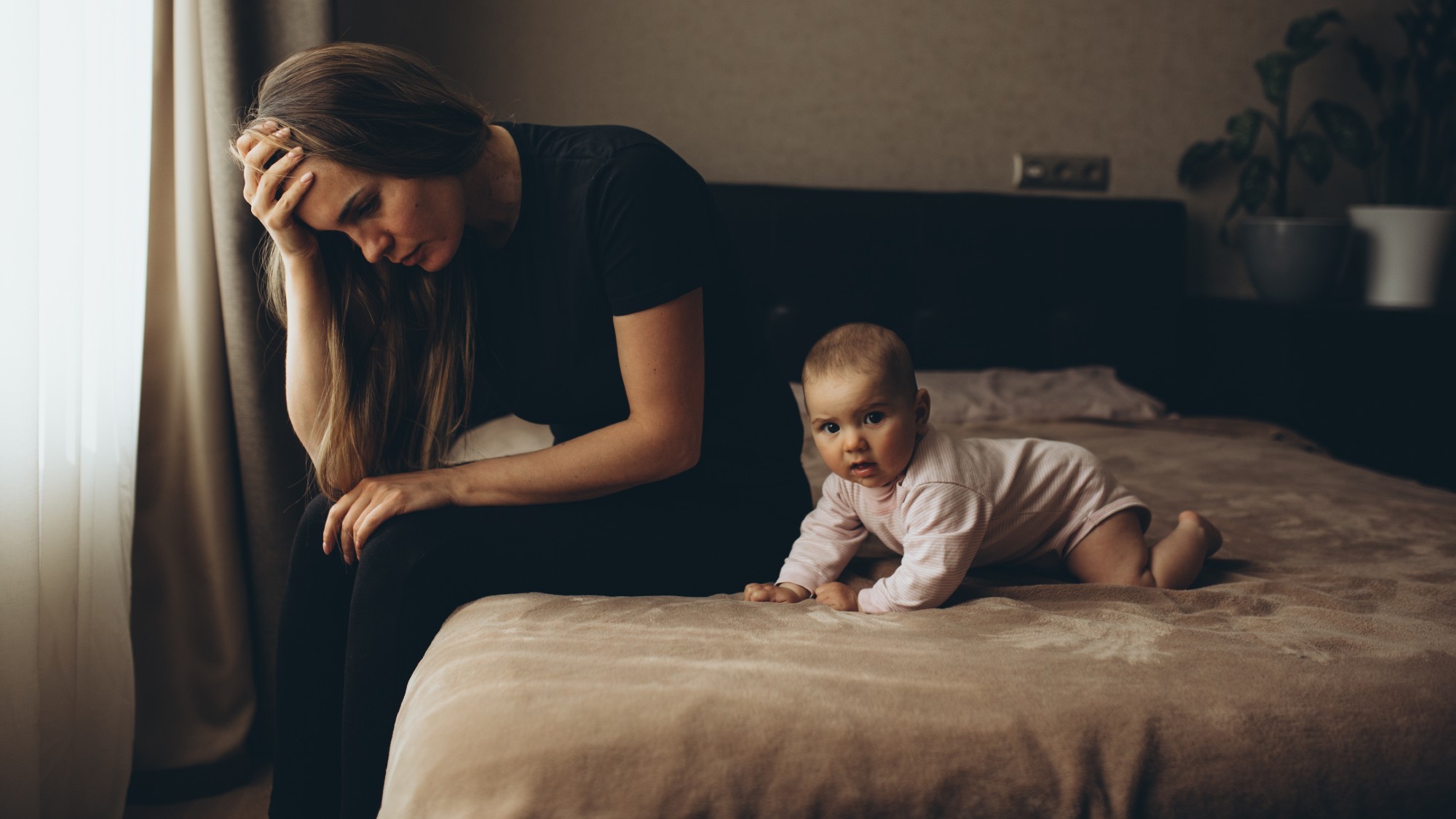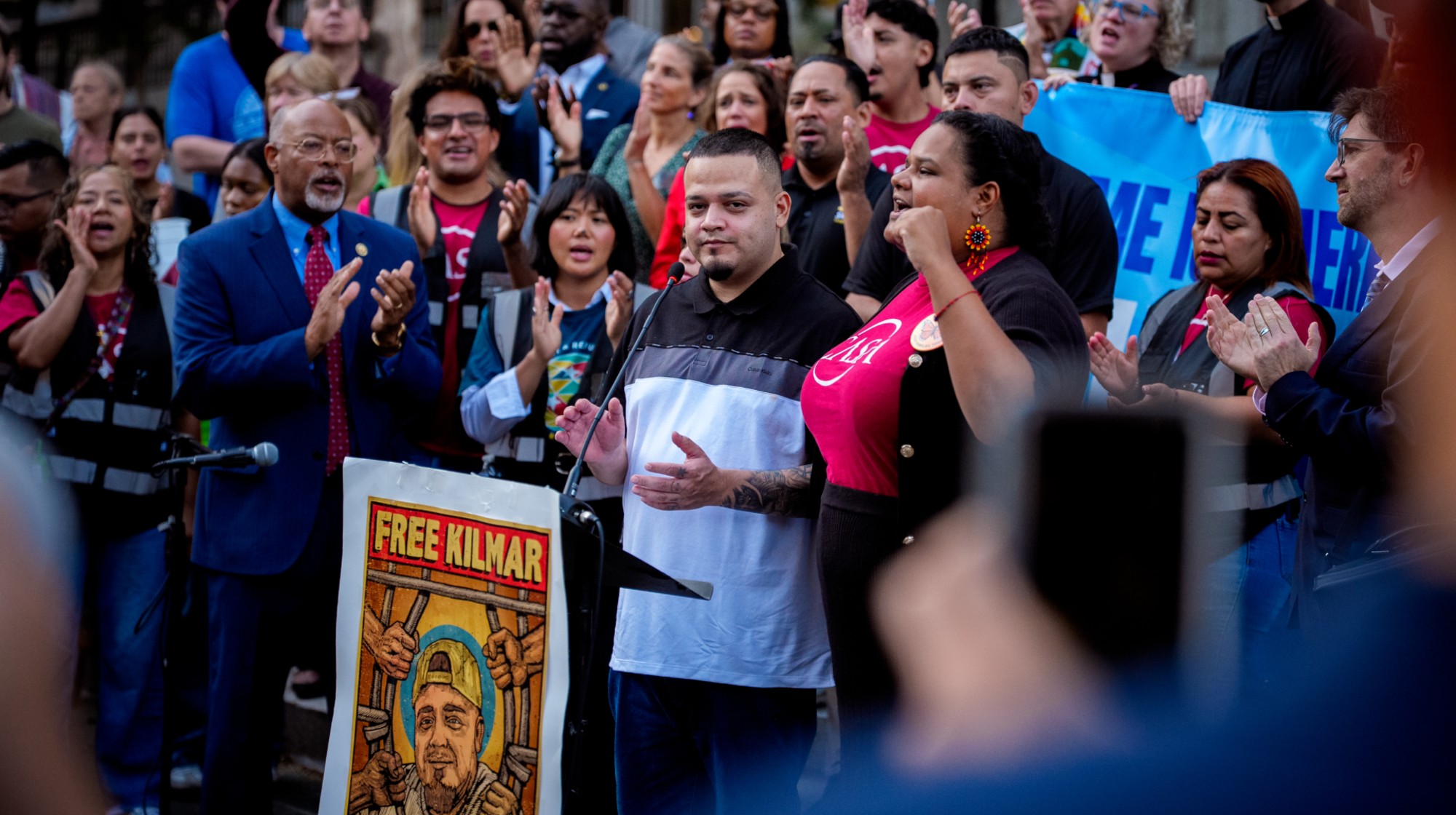Title 42 is over. Why have border crossings decreased?
The end of the controversial public health policy was supposed to bring on an onslaught of migration


It was supposed to be a catastrophe. When the Biden administration ended the pandemic-era policy known as Title 42 — which allowed the U.S. to summarily expel migrants in the name of public health — critics believed it would immediately lead to an uncontrolled influx of asylum-seekers crossing into overwhelmed border states.
But so far, roughly a week after the policy's official expiration (it was never intended to stay in place permanently), the number of unauthorized entries along the southern border has actually dropped to "an average of 4,400 per day," after first soaring to 10,000 ahead of May 11, said CBS News. Officials had predicted that up to 13,000 migrants could cross the border per day once the policy was lifted.
"We attribute the reduction in encounters at our border both to the consequences that we have strengthened and put in place for unlawful entry, and the lawful pathways that we have expanded, but also to the actions of our foreign partners," the Department of Homeland Security's Blas Nuñez-Neto told reporters on May 17. That said, "it is still early," he continued, "and we are mindful that smugglers will continue to look for ways to take advantage of the change in border policies." Title 42 may have ended, but "the conditions that are causing hemispheric migration at unprecedented levels have not changed."
The Week
Escape your echo chamber. Get the facts behind the news, plus analysis from multiple perspectives.

Sign up for The Week's Free Newsletters
From our morning news briefing to a weekly Good News Newsletter, get the best of The Week delivered directly to your inbox.
From our morning news briefing to a weekly Good News Newsletter, get the best of The Week delivered directly to your inbox.
What are the commentators saying?
These reduced migration numbers are unlikely to last long, Adam Isacson, who works on security and migration at the Washington Office on Latin America, a human rights organization, told MSNBC. More than likely, asylum-seekers are probably in "wait and see" mode, where they're taking a beat to sus out President Biden's new rules before once again attempting to cross the border. Numbers will likely rise again by Memorial Day, and then again "throughout the summer," but are "unlikely to exceed the levels that we've already seen during this administration."
Perhaps also at play is the fact that Title 42 was replaced with "an arguably tougher, more restrictive policy" that bars migrants from asylum "if they don't request refugee status in another country before entering the U.S.," wrote Justo Robles at The Guardian. And Title 8, meanwhile, "the section of the U.S. law dealing with immigration and nationality that was used at the borders before the pandemic," per NBC News, is also back in play, potentially giving further pause to those looking to cross. Under that doctrine, "migrants found ineligible for legal protections are barred from reentering the country for at least five years and can be quickly deported through a process called 'expedited removal' without ever appearing before an immigration judge," Nicole Narea explained for Vox. "And if they do try to reenter, they can face criminal prosecution." Indeed, the administration hopes that this new set of rules (which goes beyond both the asylum stipulation and Title 8) deters migrants from illegal crossings and encourages them to instead seek out legal pathways to enter the country.
Ultimately, that the situation at the border feels somewhat calm is actually "a great example of managing expectations," whether "intended or not," Jonah Goldberg noted for the Los Angeles Times. "Because President Biden predicted things would be 'chaotic for a while' after Title 42 expired, 'chaos' at the border suddenly became the political metric to watch for, as if a monumental crisis absent chaos is no big deal." But make no mistake: even with the falling numbers and the reports of disconcerting quiet, the U.S. is in the midst of its a border catastrophe "whether Biden admits it or not."
What's next?
Well, it's possible a massive surge is still on the horizon. "[W]e still need to prepare for the unknown because we don't know what's going to happen next week and continue to happen day in and day out," El Paso Mayor Oscar Leeser told CNN on May 14. Indeed, "officials and advocates are wary that border encounters could still rise aggressively because tens of thousands of migrants remain bottlenecked at the border in large part due to U.S. policies, including Title 42," said Rafael Bernal and Rebecca Beitsch at The Hill.
A free daily email with the biggest news stories of the day – and the best features from TheWeek.com
Meanwhile, cities that aren't typically concerned about immigration surges — places like New York and Los Angeles — have also begun preparing for an influx, considering the busloads of asylum-seekers that have arrived on their doorsteps in recent months. "Without federal or state assistance, we will be unable to continue treating new arrivals and those already here with the dignity and care that they deserve," New York City Mayor Eric Adams said in a recent statement.
As far as legal action goes, immigration advocates and the American Civil Liberties are currently challenging the aforementioned asylum rule, which requires that migrants prove they sought asylum elsewhere before doing so in the U.S. Those able to book an appointment through the much-derided CBP app are exempt from the requirement.
Brigid Kennedy worked at The Week from 2021 to 2023 as a staff writer, junior editor and then story editor, with an interest in U.S. politics, the economy and the music industry.
-
 ‘The economics of WhatsApp have been mysterious for years’
‘The economics of WhatsApp have been mysterious for years’Instant Opinion Opinion, comment and editorials of the day
-
 Will Democrats impeach Kristi Noem?
Will Democrats impeach Kristi Noem?Today’s Big Question Centrists, lefty activists also debate abolishing ICE
-
 Is a social media ban for teens the answer?
Is a social media ban for teens the answer?Talking Point Australia is leading the charge in banning social media for people under 16 — but there is lingering doubt as to the efficacy of such laws
-
 Will Democrats impeach Kristi Noem?
Will Democrats impeach Kristi Noem?Today’s Big Question Centrists, lefty activists also debate abolishing ICE
-
 White House halts migrant visas for 75 countries
White House halts migrant visas for 75 countriesSpeed Read Brazil, Egypt, Russia, Iran and Somalia are among the nations on the list
-
 White House ends TPS protections for Somalis
White House ends TPS protections for SomalisSpeed Read The Trump administration has given these Somalis until March 17 to leave the US
-
 ‘Care fractures after birth’
‘Care fractures after birth’instant opinion Opinion, comment and editorials of the day
-
 US citizens are carrying passports amid ICE fears
US citizens are carrying passports amid ICE fearsThe Explainer ‘You do what you have to do to avoid problems,’ one person told The Guardian
-
 Homeland Security Secretary Kristi Noem might not be long for Trumpland
Homeland Security Secretary Kristi Noem might not be long for TrumplandIN THE SPOTLIGHT She has been one of the most visible and vocal architects of Trump’s anti-immigration efforts, even as her own star risks fading
-
 Abrego García freed from jail on judge’s order
Abrego García freed from jail on judge’s orderSpeed Read The wrongfully deported man has been released from an ICE detention center
-
 $1M ‘Trump Gold Card’ goes live amid travel rule furor
$1M ‘Trump Gold Card’ goes live amid travel rule furorSpeed Read The new gold card visa offers an expedited path to citizenship in exchange for $1 million
